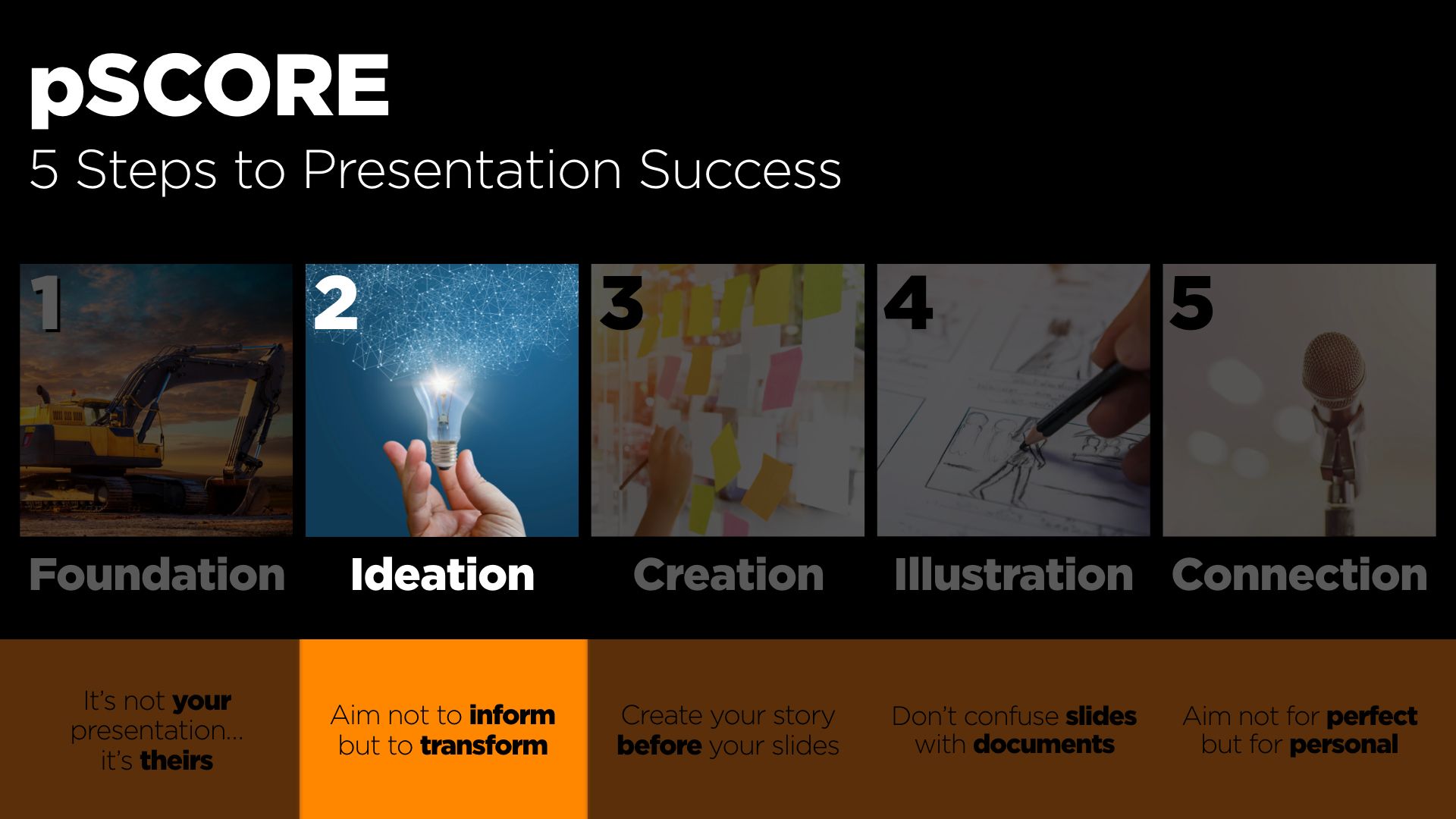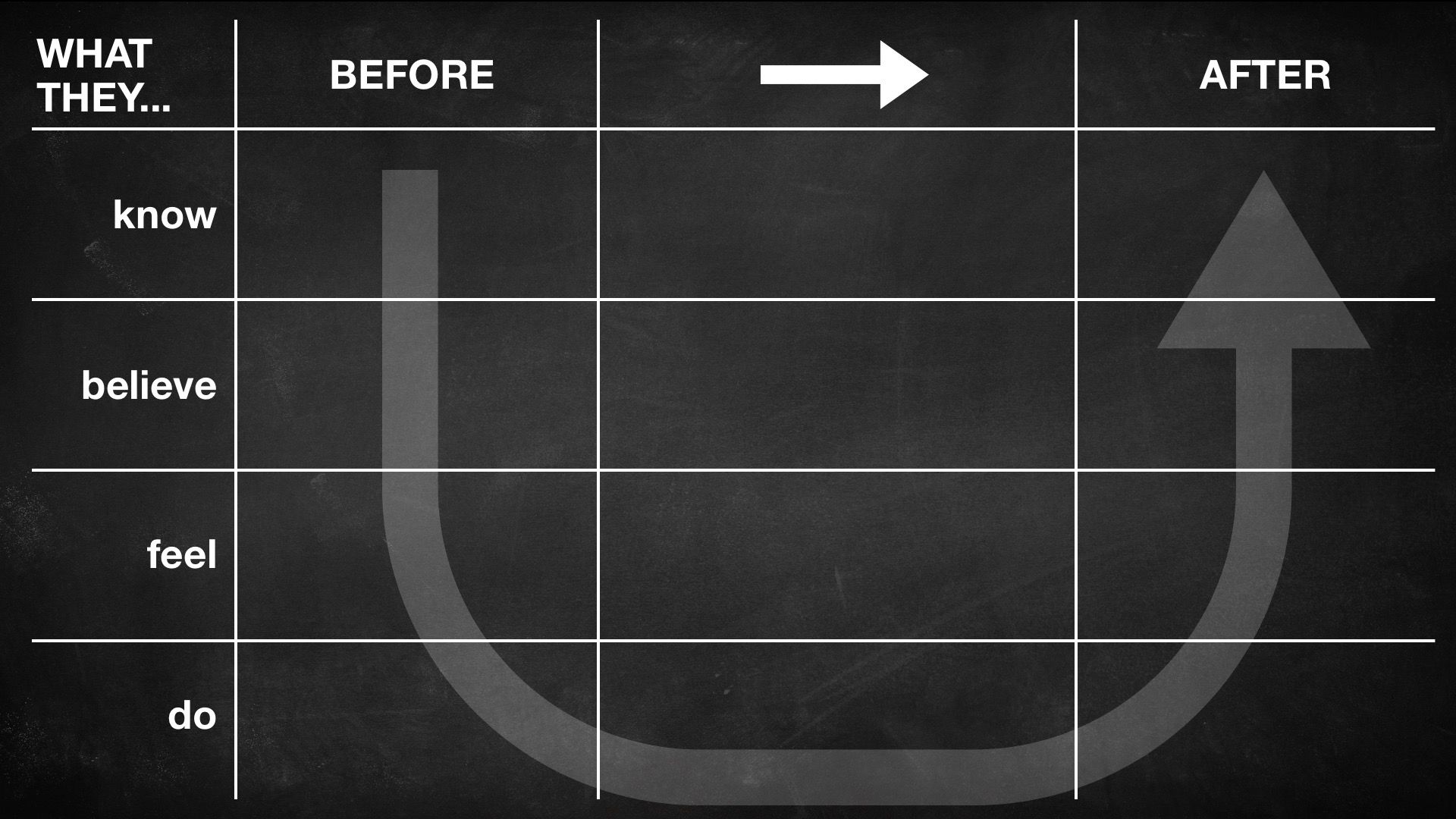Business Presentation Revolution outlines the five stages of the Presentation SCORE Method, or pSCORE, giving you a simple, proven process to follow to prepare and deliver successful presentations every time.
In this extract from Business Presentation Revolution, author Phil Waknell outlines the second stage: Ideation.
The aim of the Ideation stage is to generate all the raw material you need so you are ready to begin creating your presentation. This means you need to find ideas, because ideas are the raw material of a successful presentation.

As we’ve already seen in previous chapters, your aim is not to inform but to transform your audience somehow: from prospects into customers, from skeptics into believers, from observers into actors, or perhaps from unhappy employees into happy, motivated contributors.
Imagine your audience on one side of a river, the ‘before’ side; your aim in your presentation or meeting is to take them to the other side, the ‘after’ side.
You are not going to just stand on the ‘after’ side and shout, “Hey, look at my great idea – come over here!” Unless your idea is truly fantastic, they’re not going to swim across to find you. It’s up to you to start from their side, provide the right stepping-stones to allow them to cross, and then guide them to your destination.
Too many presenters fail to transform their audiences because they start from their own level of expertise and knowledge, and their wisdom goes over their audience’s heads. They are standing on their ‘after’ bank of the river, shouting into the mist about how wonderful it is, and have no idea where the audience is or whether they can hear or understand them. That’s no way to transform people.
You can’t take someone from point A to point B without starting from point A alongside them. And to do that, you need to know where point A is.
Four steps to understanding
There are four simple yet powerful questions you can ask yourself to help you understand where your audience is before your presentation. In relation to your objectives, company, products, services, project, ideas, etc.:
- What do they know?
This relates to relevant facts that they know for certain before your presentation.
For example, they may know the sales figures this quarter are 30% down versus last year.
- What do they believe?
This includes things they think they know but which we cannot put in the ‘know’ section for one of the following reasons:
- They are wrong.
- They aren’t sure.
- They are speculating about what might happen.
- They are making a judgment.
For example, still using the example of a CEO of a 1000-person company:
- They believe you will take a bonus despite the poor results (wrong).
- They believe you’ve been looking for an excuse to reduce headcount (unsure).
- They believe you will announce job losses (speculation).
- They believe the company strategy is crazy (judgment).
- What do they feel?
This is their emotional state as it relates to your presentation, before you begin.
For example, they may feel demotivated, afraid, angry, frustrated or pessimistic.
- What do they do?
This relates to actions they take.
For example, they may focus on selling big long-term contracts that don’t provide quick income, or they may accept long payment terms without negotiating, or they don’t collaborate effectively to boost sales.
You can answer these questions using the Audience Transformation Roadmap table, which you can draw on a board or flipchart. You can also fill it in on a computer or tablet (although remember that I recommend avoiding screens and computers while you’re trying to be creative).

After you have worked out what they know, believe, feel and do before your presentation, you will answer the same questions for your audience after your presentation.
Now that you have a clear ‘before’ and ‘after’ state for each of the four points in your roadmap and we know how we need to transform our customers, it’s time to plot how to make those changes.
This is where the middle column comes in: the Transformation Column. If you’ve drawn the Audience Transformation Roadmap on a flipchart or whiteboard, once you’ve filled in the “Before” and “After” columns, take some sticky notes and brainstorm ideas to fill in the Transformation Column.
Once you’ve filled your Transformation Column with sticky notes about how you can change what your audience knows, believes, feels and does, put these sticky notes in a logical order, like stepping-stones, and that will give you a first version of the structure of your presentation.
The Foundation and Ideation stages will set you up for success if you take the time to complete them; yet, most presenters don’t make the effort. If your objectives are worth taking time to present to your audience, they are also worth the preparation time. If you ace your preparation, you are likely to ace your presentation.
You can find more information about the Audience Transformation Roadmap here, as well as a downloadable template. You can also learn more about it in the TEDx talk below.
